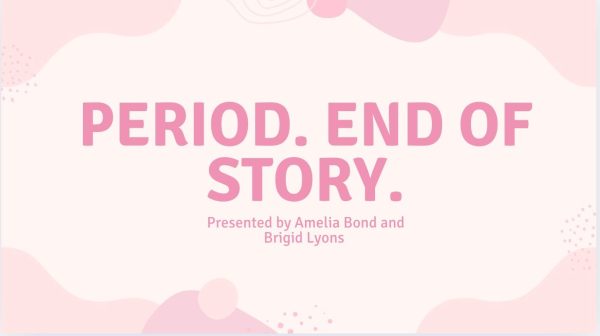A DEI Call to Action
Here’s what I, as a BIPoC student at Bancroft, and what other diverse students in the Bancroft community need from you, the community.
Entering a predominately white institution as a diverse student is difficult. This difficulty goes past BIPoC students. It’s difficult for LGBTQ+ identifying students to enter a predominately straight space. It’s difficult for students with disabilities to enter spaces with an able-bodied majority. The list can go on and on. However, this experience is made even more difficult when the students are not being provided for by the institution’s administration. As it stands, the diverse members of the Bancroft community are not being cared for. We do not have adequate resources or support to thrive in our school’s environment. The Bancroft diversity statement states the following:
“We strive to create a diverse and inclusive community in which each individual is safe, known, and valued… We strive for an inclusive community that gives voice to all members, encourages challenges to biases and assumptions, and promotes ongoing discussion of these important topics.”
Currently, the diverse community at Bancroft and their student leaders feel as though these are not being met. That needs to change. Below, you can find outlined steps and action items that the school needs to take as soon as possible for the school community to become the inclusive space it claims to be. The discussions that this letter will foster are not a matter of pointing fingers and assigning blame. The discussions are for us, those who came before us, and those who will come after. As diverse students in the Bancroft community, we must be supported in order to reach our true academic potential.
The student leaders here at Bancroft have committed ourselves to this work and are ready and willing to step up and help make changes. We continue to put ourselves out there. We continue to do work we don’t have to do. We continue to make sacrifices and compromises to ensure the well-being of the diverse community. We cannot continue to do this alone. Meet us halfway and begin to aid us in the fight for inclusion and equality at Bancroft School. It will not be easy, and it will not be quick, but over time, we will begin to see a community that is healthy and supportive to all its members. That dream alone is worth the effort.
My time at Bancroft is now over. However, I will never stop caring about the people and the place I left behind. I put together this list to provide guidance and to serve as a place to start making changes. However, if you feel that my list is no longer relevant, throw it out. Burn it. Cast it aside and walk the path that is best suited to support the diverse community at Bancroft. I, after all, am only one mind. There is only so much that I can think of and only so much support I can provide. Hopefully, this letter serves as a building block to make everything even just a little bit easier.
~ Ayah Yusuf, Class of 2021
- Be prepared to leave behind the same solutions you implemented.
What we need as current Bancroft students is not the same as what the students that came before us needed, just as it is not the same as what the students who come after us will need. Be ready to let go of solutions that no longer work. DEI work is never done because of this very reason. Ideas and changes need to be implemented as soon as they are needed and they need to be replaced as soon as they are no longer effective. There is no such thing as a perfect solution, so be ready to destroy your own work to replace it with something better.
- Celebrate joy. Do not focus on guilt.
Yes, the histories of diverse peoples in America have been stained with pain and oppression. However, when you choose to only focus on our oppression, we become objects to pity rather than humans with complex histories. Recognize our pain and the systems that still oppress us. At the same time, begin recognizing the joy, excellence, and rich, complex cultures that make our histories intricate.
- Change the programming for classes. Make our histories mandatory.
There is no option to not take American history. There is no option to not take Euro-centric world histories. Our most popular history courses and our mandatory ones focus on the history of straight, white males. In these mandatory classes, start to include the histories of BIPoC, women, the LGBTQ+ community, and more. In educating your students, it’s vital that they have the background to understand the complex social, political, and economic systems at play in the world. This begins with diversifying the mandatory history courses all students take.
- Rethink “canon” readings and curriculum.
We understand there is a need to read classic literature, but there are many classics from diverse authors and from diverse perspectives. English classes have a large potential to be the center of diverse learning at Bancroft. It is time to put aside some of the required reading from straight, white, old, dead men, and begin to think about newer classics from a variety of perspectives.
- Deal with racism, sexism, homophobia, transphobia, islamophobia, antisemitism, ableism, and other forms of discrimination the way you deal with plagiarism.
Bancroft has a zero-tolerance policy for plagiarism. Discrimination is arguably a more serious offense and should be treated to the same severity or a higher severity. Hate should never be tolerated in a school environment. The dire consequences that exist if you plagiarize should also exist for any form of discrimination in the school.
- Provide and allow affinity spaces for your students.
It is up to students to create their own affinity groups. However, there are several steps you can take to support the creation of these groups. First, hire a more diverse faculty. Those faculty members will be the ones to help run these groups and serve as faculty advisors. Second, do not destroy these groups because they are not diverse. The groups are not meant to be diverse. We are allowed to have Black-only, Brown-only, LGBTQ+-only, etc. groups in order for us to feel at home in this school. The existence of the groups is providing much-needed support for those who otherwise have none. Third, be ready to support and defend these groups in any way you can. Just knowing there is support will do wonders to help these affinity groups grow. Fourth, be open and willing to take criticism and ideas from these groups. The leaders and members can serve as collaborators if treated with respect and care. Be open to having conversations with them, and take the suggestions they make.
- Begin to recognize the land we are on.
This nation has been built upon land that does not belong to it. Our school is on land that does not belong to us. As a school, recognize that where we stand is not ours and recognize the indigenous tribe that it does belong to in any way possible. This process can happen on our website, at events, and in many other places. If you need guidance, do research, then reach out to our local indigenous tribes’ leaders.
- Add more gender-neutral bathrooms and locker rooms.
We only have a handful of gender-neutral bathrooms, most of which are in spots that are now considered “off-limits” due to COVID-19 and they are neither widely known by the Upper School community nor accessible for those with physical disabilities. There are no gender-neutral changing spaces or locker rooms. Part of making the school inclusive is to create space for students who identify outside the gender binary. Adding gender-neutral spaces is one of many ways to do that. It is not the only way, nor should it be the only step to take, but it is a good place to begin.
- Recognize the intersectionality of your students and support them and all their identities.
People are not of one singular identity. We all sit at the intersections of multiple different ones (i.e. Black AND male AND queer AND able-bodied, etc.). Recognize that each individual has different realities based on where their crossroads of identity lies, and support each student in all of their intersecting identities.
- Expand your definition of diversity.
Racial/ethnic diversity is important. However, we cannot forget other facets of diversity within our school environment as well. The diversity in sexual orientation, gender identity, ability, religion, etc. within the student body and faculty should also be recognized and supported.
- Include every group outlined in your definition of diversity.
Recognizing one group does not mean you can ignore the rest. Support and recognize all facets of diversity within the school body. Do not use the inclusion of one to ignore the rest.
- Support diverse students.
Listen to us. Understand what we need. Then, give what we need to us. We are ready and willing to work to secure our existence and the existence of those who come after us. Listen to us, work with us, and support us. Meet us halfway to continue the work we have already begun.
- Use clear and specific language in rules, regulations, and guides.
Official documents such as the Student Handbook, the Code of Conduct, and strategic plans all use language that the Bancroft community has to abide by. These documents will often allude to different forms of discrimination as forbidden, but the language does not always specifically protect all members of the student population. The lack of specificity allows members of our community to commit acts of discrimination and/or microaggressions with little to no consequences. Revise the language used in our school’s official documents to close these loopholes and hold everyone accountable.
- Recognize the systems you perpetrate.
Bancroft plays into several social systems that actively work to oppress and hold back the diverse populations in the student body. Recognize them and understand and work towards breaking out of them. Think about how the hiring processes, admission processes, class curriculums, school services, and more create difficulties for diverse students to participate in school life. Then, tackle these disparities.
- Recognize the school’s history of oppression.
Once again, the school needs to be aware of the many ways it plays into and perpetuates harmful systems that work to oppress and set back members of our communities. Tradition oftentimes harms diverse students, and by clinging to our past, we continue to inflict that same harm. Recognize our painful history as an institution, and work to erase the effects of it. Do not forget it, but rather learn from it, and strive not to make the same mistakes.
- Hire more faculty of color.
If students do not see themselves reflected in the faculty and staff, they will never feel at home in a learning environment. It is essential that we begin to see faculty that reflects the diversity of the student body. Adding diversity does not mean in just the maintenance crew. For a while, this was the only place where we could see racial diversity. That has harmful implications and plays into several racial stereotypes. We need to begin to see all kinds of diversity across the board.
- Diversify your board.
Just as there needs to be diversity in our student body, faculty, administration, and staff, there also needs to be diversity in the Board of Trustees. A board that does not reflect the diversity of its community cannot properly serve its community.
- Hire a diversity director.
There needs to be someone in this school to help monitor and continue this work. Hiring someone specifically for this job ensures that work will constantly be done to foster a safe and inclusive environment for everyone within the Bancroft community.
- Recognize that it’s not the diverse students’ job to make space for themselves.
We do this work because we want to, not because we have to. It is the responsibility of the majority to foster safe spaces for everyone else. The board and the administration have control over our school’s environment. With that control, it is your responsibility to foster inclusion. It is not the job of those without power to create and foster equity and equality within a community. That lies in the hands of the ones with power. It lies in the hands of the board and administration.
- Stop with the empty promises.
We, as students, need to see progress. We understand that things will take time, but in order for your promises to have merit, we need to see steps being taken. We need responses to our questions. “We don’t know, but we are working on it” is a valid response, but dodging questions is not one. We want your promises to have weight and merit behind them. Simply offer more information to make this real.
- Stop making excuses.
This point directly connects to the last one. Excuses and empty promises are born out of a lack of communication. By excluding students in conversations about issues that pertain to them, you create an air of distrust and the need to come up with excuses. We ask for full transparency. Excuses also extend to cases of accountability. There is no reason not to take responsibility for incidents that happen within the school community. Excuses in those cases are unacceptable as well.
- Take responsibility. Begin accountability.
The accountability cycle at this school is broken. Those who have wronged students with ignorance and arrogance are allowed to continue doing so. The ways that the administration falls short are never addressed. It is vital to recognize these discriminative systems that have plagued this institution. That recognition is where we can begin to take accountability.
- You cannot stay completely apolitical.
There are times to be apolitical, and in many cases, staying neutral does more good than harm. However, many social issues have become either political or closely tied to politics. Not speaking up or rebuking harmful policies of this nature is the same as supporting them. There are things that our government systems and justice systems do that are inherently wrong. Make your position as standing in support of the diverse body abundantly clear.
- Understand that you do not have all the answers. Finding those will take work.
It’s okay to be stuck. It’s okay to not know how to help, but admitting that and working to fix it gives a level of credibility to you and your work that cannot be replicated. There are those willing to help you find the answers. Admitting you don’t have them and listening to those who do is the best way to begin to work.
- Act in the student’s best interests. Not your wallets.
It is often felt that the margin of error for students who pay full tuition is much larger than those on financial aid. This issue becomes more problematic when we consider that diverse students are more often the ones with financial assistance from the school. That disparity needs to be addressed. Those who may have a family history with the school or who have more wealth in their families do not deserve more from the school than other students. Put the general well-being of all the students first. Every single time.
- Ask for help.
There are so many resources available to you. Use them. Ask for help. DEI work is not easy, and it is also not done alone. Continue to make sure you are well equipped to provide for your students.
- Listen to your students.
Diverse students will tell you what they need to thrive. Give them space to talk, listen to them, and respond by implementing changes they suggest. Take the criticism they have and truly address it. Work with them, not against them.
- Become co-conspirators, not allies.
Allies are performative. They throw in some moral support, some Instagram posts, and some pretty words and move on with their day. They allow diverse individuals to do the work that is needed to create safe environments and stand aside watching. Allies are not productive. We need co-conspirators. We need people who will lead the charge alongside us. We need people who will educate themselves, implement solutions that benefit us, and reevaluate their policies to ensure everyone is cared for. Become co-conspirators. Become actively involved in change, instead of watching on the sidelines.













Darren Belanger • May 17, 2021 at 2:38 PM
No holds barred, and I like it! I appreciate everything you’ve done to keep us learning!
Stay tenacious, my friend
William Chambers • May 13, 2021 at 9:14 AM
Thank you Ayah! Your words will be shared with the Faculty Anti-Racism group tonight. Your wisdom and courage are much appreciated here. Emerson is lucky to have you.
Corrine Williams • May 10, 2021 at 10:52 AM
Ayah, it as been a pleasure working with you this year in MCSU and the BIPOC Affinity Group. This is a powerful article and your work and passion towards diversity, equity and inclusion has never gone unnoticed!
Ava Chase • May 9, 2021 at 3:30 PM
You hold so much power. Thank you for taking all of your extra time and energy to write this piece.
Anna • May 7, 2021 at 2:54 PM
ayah you never miss!! this is so comprehensive, thank you for putting this together when you did not have to.